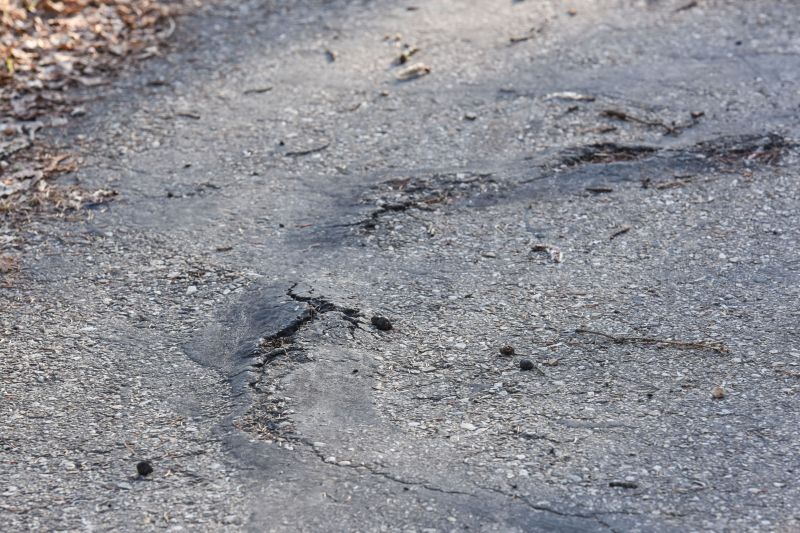
The Centennial Park Pathway Plan came before the Policies and Priorities Committee on April 19. The five-kilometre stretch of well-used pathway that makes up the Centennial Park system is inspected regularly, and maintenance is continuous, but cracking and heaving are taking their toll.
Engineering Services Coordinator for the Town of Whitecourt Juan Grande said the pathways were gravel until 2009 when they were upgraded to a paved surface. “The pavement has deteriorated in certain sections of the pathway, mainly those areas where it is heavily treed, and some of the drainage spills over the surface and doesn’t have a way to get out. We’ve made it part of our maintenance inspection to review the performance every year. We do a walk-through and record how many tripping hazards and failures we have in the sections. That’s how we came up with the phase plan.”
There are six phases in the proposed plan with varying lengths. Phase 1 is the largest, with 1308m. “The plan identifies different types of treatments. Each phase would have a different rehabilitation. Some of them don’t require a full reconstruction but more the widening of the trail. When it was constructed, the construction equipment was much smaller, roughly about 2.2 metres wide, and that’s the paved surface. Now (with) the more use we have through the trails, I think it’s warranted for the trail to be widened and allow for two-way traffic so that the stroller doesn’t conflict with the bike or pedestrians,” explained Grande.
He said that with paving, the bigger the equipment is, the fewer seams will be on the road, which is one of the reasons that equipment has increased in size. He said they looked for a paver that could do the same trail size that exists now, but that options were minimal. “We found one, but they would have to bring it from south of Calgary, so that added costs for us to be able to pave. Considering those, it becomes apparent that reconstruction of the trail should be to a much wider width.”
CAO Peter Smyl added that the phases are prioritized and phased based on cost and severity. “Once we adopt the plan, it can be adopted into our 20-year Capital Plan. It’s going to take a long time to get through the phases but (we are) actively applying for the grants.”
They have one grant application in for phase one and are hopeful. The grant is a partnership with the Whitecourt Heritage Society, as the path work would help bring residents to the Forest Interpretive Centre (FIC), where the society is housed. As grants become available, stages can be moved forward. Grants can often become available quickly, so having the plan ready to go is essential.
Councillor Bill McAree asked if the pathway was part of the community’s fire protection plan. He said it would potentially open up the door to more grant opportunities if it were. “Yes. It’s definitely an asset in regard to applying for grants because this is the (pathway) that the fire department uses to enact the sprinkler system. They have done an annual scenario where they do the testing and run the sprinkler systems throughout the whole pathway and even use it to green up the pathway when it’s dry conditions for the protection of the town,” explained Smyl.
Given the damage to some of the pathway surfaces, Councillor Derek Schlosser asked what the tree root barriers looked like and how they worked. “They must be pretty substantial because roots go through concrete.” Grande provided an example to help explain the installation that will be used. “I don’t know if you recall the pathway we have in front of No Frills. It used to have all those roots. They were actually through the pathway, and it was really bumpy. We started looking at what materials we could use to help the trees not protrude. It’s basically a corrugated type of plastic, and in our application, we bury it two feet. It’s just enough that if it does go through, it doesn’t go through the base. It just goes underneath. We found that it’s quite successful, and so far, we haven’t seen any roots protruding through that section of the pathway we paved.” Grande said the work on the sidewalk in front of No Frills happened in 2014. Eight years later, there isn’t a sign of damage from the nearby poplar trees and their super-strong roots.
Phase one is widening and paving a large portion of the trail from the FIC and along the power line. Other phases will see a complete reconstruction. Along Pumphouse Trail, one area of concern is at the Centennial Snow Dump, where sinkholes were found. Grande said the issue surrounds a culvert where much of the drainage runoff from the hilltop area flows. He said the drainage issues need to be addressed before work can be done.
The Policies and Priorities Committee voted to incorporate the Centennial Park Pathway Plan into the 20 Year Capital and Major Maintenance Plan, which Council will review and adopt at a future meeting.







More Stories
Community spirit shines at large-scale youth baseball event
Birthday party chaos sung beautifully by Pumpjack Players’ youth in spring musical
Gearing up for another season of cars, cruising and camaraderie